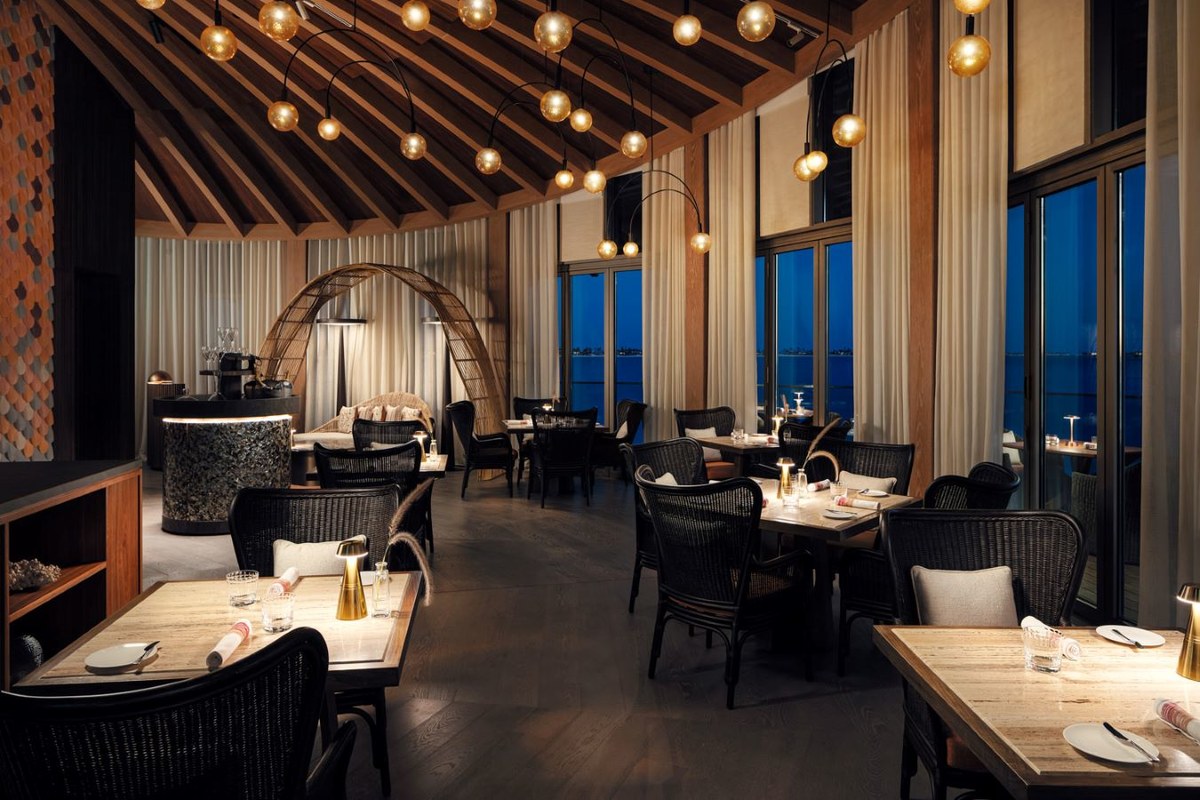JEDDAH: The newly-opened The St. Regis Red Sea is home to several restaurants, including Middle Eastern restaurant Nesma, Japanese establishment Gishiki 45, and Tilina — a “floating” restaurant that serves a degustation menu. The resort’s executive sous chef, Skotarenko Artem, from Russia, oversees a team of 75.
“Discipline is one of the most important things in the kitchen. I can say it’s one of the pillars. But relationships in the kitchen should be based on respect. If you shout at your employees, you can make people scared, but they will never respect you for it,” Artem tells Arab News. “Shouting is a thing of the past in the kitchen.”

The St. Regis Red Sea Resort’s Tilina offers a degustation menu for its visitors. (Supplied)
Tilina, he says, is a “unique concept for Saudi Arabia.”
“The degustation menu takes two to three hours. Not everyone can sit for this time and wait for the dishes. So, we try to educate the guests,” he explains.
When you started out what was the most common mistake you made?
I guess trying to repeat the dishes of celebrity chefs that I found online, from other parts of the world. And I was really upset with the results because they were below my expectations. That was because of products and seasonality, because every country has different produce and you can’t expect to get the same results in another country.
What’s your top tip for amateurs?
Don’t be afraid to experiment. If you find a nice recipe and you want to follow it, most likely you won’t have all the ingredients available at home. So use your imagination and, like this, you can achieve a great result.
What one ingredient can instantly improve any dish?
Doesn’t matter where you’re cooking — it can be a restaurant or at home — love is the most important.
What’s the most common mistake that you find in other restaurants?
I’m actually not very picky when I go out. But, for me, the most common issue is seasoning. It’s very easy to spoil a dish if you have poor seasoning; it becomes flat and, actually, it is dead.
What’s your favorite cuisine?
When I go out, I’m always looking for something unusual and interesting that I’m not familiar with. It helps to keep your mind open.
What’s your go-to dish if you have to cook something quickly at home?
I don’t actually cook at home very often. But I’ll always have fresh bread in and a piece of good quality cheese. Along with them, I have all these different kinds of preserves and pickled vegetables. So, if I have to do something quick at home, I’d make a nice Cuban-style sandwich.
What customer behavior most annoys you?
Actually, there’s a long list. But what really annoys me is when guests leave the table without valid excuses when the dishes are ready to serve. Because then you need to remake the dish. It’s a disservice to all the other guests in the restaurant.
What’s your favorite dish to cook?
Where I’m from, it tends to get very cold. So, I love to make rich soups of all kinds. But they tend to take a lot of time and patience.
What’s the most difficult dish for you to get right?
Actually, I’m really flexible and adaptable. For me, everything is possible if you’re focused and committed to it.
RECIPE
Chef Skotarenko’s cured mackerel, salted laminaria, and dill kefir sauce

INGREDIENTS
For the brine: 1L water; 80g sea salt; 30g brown sugar; 1 garlic clove; 10g dill; 30g sunflower oil (or your preferred flavor of oil); 2g black pepper; 2g bay leaves
INSTRUCTIONS
1. Place a whole mackerel (300-400g) in the brine and leave overnight.
2. Place 500g fresh laminaria in a pot of cold water and bring to a boil. Strain the water and repeat the process three times.
3. Wash the laminaria in cold water, sprinkle with 5g sea salt, and refrigerate overnight.
4. Slice 500g fresh cucumber. Mix with 50g olive oil, a pinch of salt, and 20g apple cider vinegar. Refrigerate overnight.
5. Mix 500g kefir (or laban if you prefer) with 30g lemon juice, 5g finely chopped garlic, 5g salt, and 2g white pepper.
6. Bring a pot of salted water to a boil and add 500g dill. Remove after 10 seconds and place in ice-cold water. Blend the dill with 500g olive oil until smooth, then strain through a fine sieve.
7. Plate all the ingredients separately and serve.

























